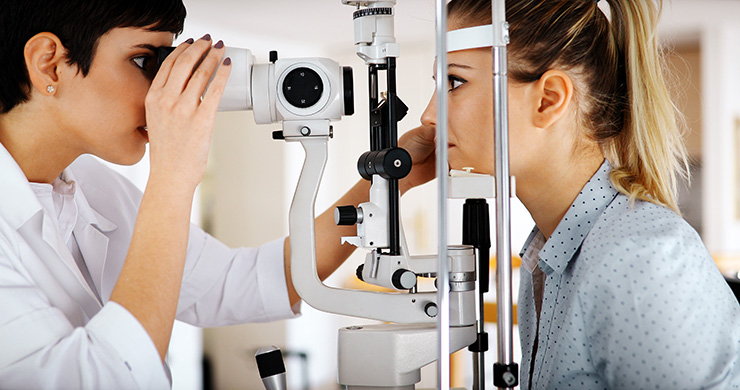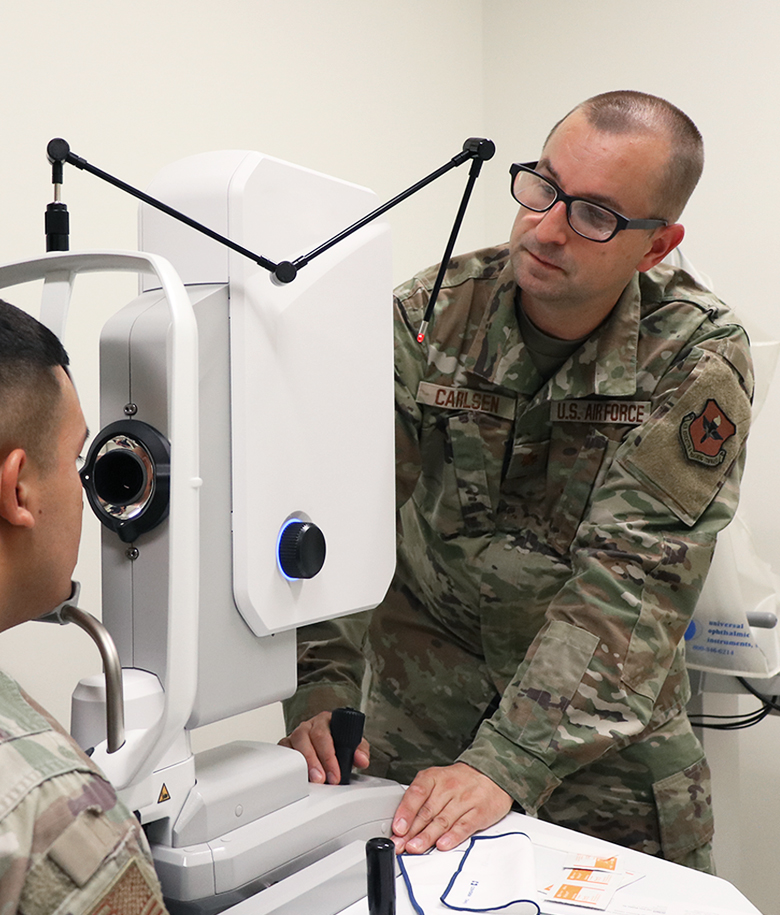Understanding the Function of Your Eye Doctor in Maintaining Vision
Discovering the Newest Technological Advancements in Optometry and What They Mean for Eye Doctors
In the ever-evolving area of optometry, recent technical developments are reshaping just how practitioners approach eye care. From the accuracy of Optical Coherence Tomography to the nuanced understandings used by AI-driven diagnostic devices, these developments are establishing brand-new requirements in client analysis and treatment. Teleoptometry is positioned to redefine availability, making certain that experience transcends geographical limitations. As these innovations penetrate the method, optometrists are confronted with the obstacle of embracing these tools to improve person results. The concern remains: exactly how will these technical changes redefine the roles and responsibilities within the occupation?
Developments in Diagnostic Equipment
Advancing the field of optometry, developments in diagnostic devices have transformed the method eye treatment professionals assess and detect visual disabilities and ocular conditions. The previous decade has actually experienced considerable technological innovations, enabling more extensive and precise evaluations. Optical Comprehensibility Tomography (OCT), as an example, supplies high-resolution cross-sectional pictures of the retina, enabling the early discovery of illness such as glaucoma and age-related macular deterioration. This non-invasive imaging strategy has actually ended up being essential in contemporary optometric method.
Another trick advancement is the intro of sophisticated corneal topography systems, which map the surface curvature of the cornea with precision. These devices are specifically advantageous for suitable call lenses and diagnosing corneal problems. Digital retinal imaging has actually changed traditional ophthalmoscopy, providing thorough, panoramic sights of the retina that promote thorough visual examinations.
The development of wavefront aberrometry has actually additionally been important, enabling the evaluation of refractive mistakes with unmatched accuracy (Opticore Optometry). This innovation helps in tailoring restorative lenses and boosting surgical end results for refractive surgeries. Collectively, these analysis improvements encourage optometrists to deliver exceptional client care, making sure very early treatment and tailored treatment techniques, ultimately boosting aesthetic health results
AI in Individual Administration
Structure on the structure of sophisticated analysis tools, the incorporation of expert system (AI) in individual monitoring represents a transformative jump for optometry. AI systems are significantly utilized to boost performance, accuracy, and customization in patient care. By evaluating vast amounts of information, AI can recognize patterns and anticipate prospective ocular problems, allowing eye doctors to tailor treatments more successfully. This capacity is critical in taking care of persistent eye diseases such as glaucoma and diabetic person retinopathy, where very early detection and constant monitoring are essential.
Moreover, AI-driven systems help with streamlined person interactions and management procedures. Automated scheduling, online appointments, and individualized follow-up plans not only improve individual complete satisfaction but also maximize time monitoring for experts. These systems can triage people based on the seriousness of their conditions, making sure that those in crucial need get punctual interest.
Furthermore, AI enhances decision-making by providing optometrists with evidence-based referrals and treatment pathways. By incorporating data from electronic wellness records, AI devices supply insights that educate scientific choices, minimizing the threat of mistakes and enhancing patient outcomes. As AI remains to advance, its duty in individual administration will likely broaden, reshaping the landscape of optometric treatment.
Advancements in Retinal Imaging
In the realm of optometry, retinal imaging has experienced remarkable technological innovations that are improving diagnostic capabilities and patient treatment. Innovations such as Optical Coherence Tomography (OCT) and fundus photography have actually revolutionized exactly how optometrists examine the retina and visualize. OCT, particularly, provides high-resolution, cross-sectional photos of the retina, permitting for the thorough assessment of its layers. This capacity is vital for early detection and administration of problems like glaucoma, diabetic person retinopathy, and age-related macular degeneration.
Improved imaging modalities like OCT angiography are further refining diagnostic accuracy. This non-invasive technique maps blood circulation in the retina, providing vital understandings into vascular health and wellness without the need for color shots. Furthermore, flexible optics technology is being incorporated into retinal imaging systems to remedy ocular aberrations, providing unprecedented image clearness. Such advancements promote the recognition of min retinal modifications that could represent illness progression.
Moreover, improvements in expert system are boosting retinal imaging by making it possible for automated analysis of large datasets. These systems assist eye doctors in recognizing patterns a measure of pathology, thereby improving analysis accuracy and effectiveness. Collectively, these developments are changing retinal imaging into a keystone of modern-day eye treatment, enhancing results and broadening healing opportunities.
Teleoptometry's Growing Role
Teleoptometry is increasingly becoming an important part of eye care, driven by improvements in electronic communication and analysis devices. As optometry welcomes electronic improvement, teleoptometry facilitates remote examinations, enabling eye doctors to extend their solutions beyond standard borders. This is especially advantageous in underserved and country areas where access to specialized eye treatment is usually minimal. By leveraging high-resolution video conferencing and progressed retinal imaging, optometrists can carry out detailed eye exams from afar, making certain timely medical diagnosis and therapy.
The combination of man-made helpful hints intelligence (AI) additional boosts teleoptometry, allowing the analysis of aesthetic information and helping in the detection of eye conditions such as glaucoma and diabetic person retinopathy. AI-powered formulas can quickly translate read this intricate imaging information, supplying optometrists with important insights that boost professional decision-making.
Furthermore, teleoptometry sustains continuity of treatment via seamless assimilation with digital wellness documents (EHRs), enabling eye doctors to preserve extensive individual histories. When seeking advice from with different practitioners., this makes sure that individuals get consistent and individualized treatment even.
Despite these benefits, challenges stay, including ensuring information security and taking care of individual expectations. However, teleoptometry stands for a considerable stride towards more obtainable, efficient, and patient-centered eye care. As modern technology progresses, its role is positioned to expand further.

Future Trends in Eye Care
A myriad of innovative patterns is set to improve the future of eye care, driven by technical developments and the progressing demands of patients. One substantial trend is the combination of fabricated intelligence (AI) in diagnostics, which assures to improve the precision and effectiveness of eye exams. AI algorithms can evaluate huge quantities of information from retinal pictures, potentially identifying conditions like diabetic person retinopathy and glaucoma earlier than standard methods.
Moreover, individualized medication is acquiring traction in optometry, with hereditary testing notifying tailored treatment plans. This approach intends to enhance individual end results by customizing treatments to specific genetic profiles. Wearable innovation, such as clever get in touch with lenses, is also on the perspective, using real-time monitoring of intraocular pressure or glucose levels, hence offering constant understandings into systemic and eye wellness.
The fostering of augmented truth (AR) and virtual truth (VIRTUAL REALITY) in training and individual education is another arising fad. These technologies provide immersive experiences that can boost understanding and skills both for optometrists and individuals. As these trends evolve, eye doctors should remain abreast of technical improvements to supply advanced care, ensuring enhanced person end results and satisfaction in the dynamic landscape of eye treatment.
Verdict

Jointly, these diagnostic advancements equip optometrists to supply premium individual care, guaranteeing early intervention and customized therapy strategies, inevitably boosting aesthetic health and wellness end results.

As these modern technologies proceed to develop, eye doctors must adapt and integrate them into technique, inevitably enhancing workflow effectiveness and raising the requirement of eye treatment supplied to individuals.